
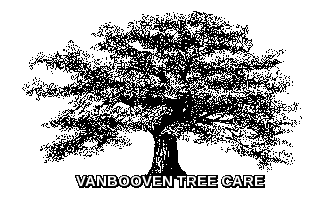
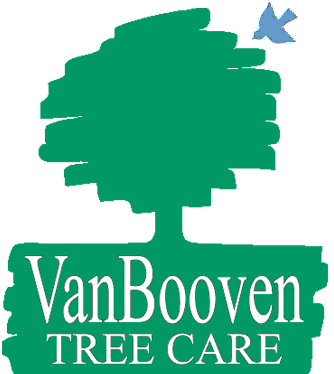



VanBooven Tree Care Home Page
VanBooven Professional Tree
Maintenance
News
Basic Pruning Concepts
It is important for people to have
this information, knowledge is power.
The average person does not know a lot about trees, they are
trusting a professional to give them
good, honest information. Here are some important concepts
regarding pruning.
Pictured below is a good
illustration of basic pruning needs-this is what any competent Arborist
should be advocating.
There is much more to pruning trees, but this illustration is a good place to
start the conversation.
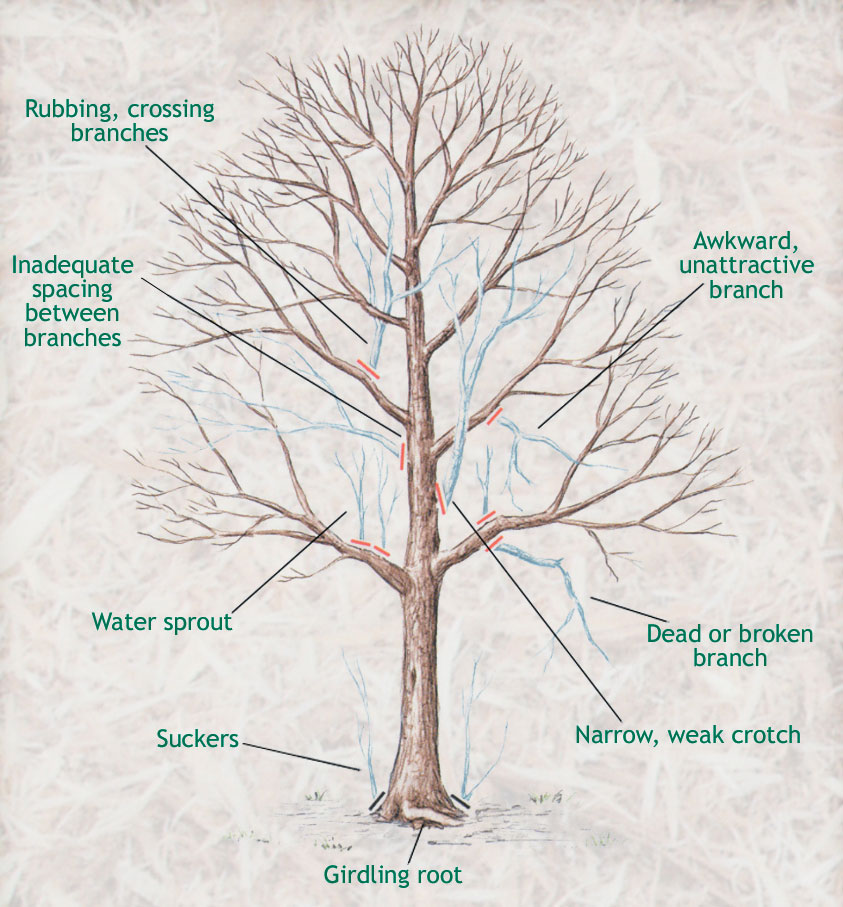
*When
pruning, less is more, never remove a large portion of the total
canopy.
Do not remove a large portion of inner growth/interior limbs,
this is a very selective process.
There are a lot of tree trimmers (not Arborists) routinely
overpruning trees!
No
climbing spikes when pruning!
No
topping or severe heading cuts!
*Every pruning
cut is an injury to the tree. Trees use a tremendous amount of
energy to wall off
and eventually cover these injuries with healthy new wood.
Pruning cuts must be made
at lateral limbs or branch collars- we still see all varieties of
improper cuts(flush cuts and stubs).
When improper pruning cuts are made, the injury leads to decay.
Unfortunately,
there are always people working on trees that have no real
understanding
of why they are pruning a particular limb and leaving another.
We see quite a bit of overpruning in Kansas City- trees with a
large amount of the interior limbs
removed and trees completely stripped out of these interior
limbs.
This is known in our industry as "lion's tailing" and
is either a rookie error,
someone doesn't know how to prune, won't take the time to learn
how to properly prune, or just doesn't care.
Pictured below is a classic example of lion's tailing/overpruning-
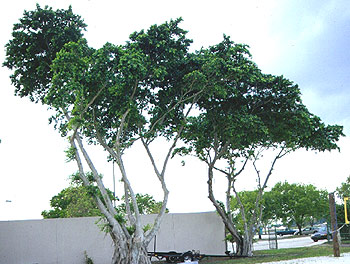
Picture courtesy of Dr. Ed Gilman
What has been
done to these trees is setting them up for future failure!
There are no inner lateral limbs for support
or to act as a counter balance under loading by wind.
Limbs are now upright and extremely tip heavy. There is no doubt
that these long, ponderous,tip heavy limbs will fail under any
type of loading, particularly high winds. We see these branch and
stem failures after every big storm.
Pictured below is another graphic example of this problem-
There are no low
lateral or interior limbs left on this poor tree!
Whoever did this has predisposed
this tree to future failure.
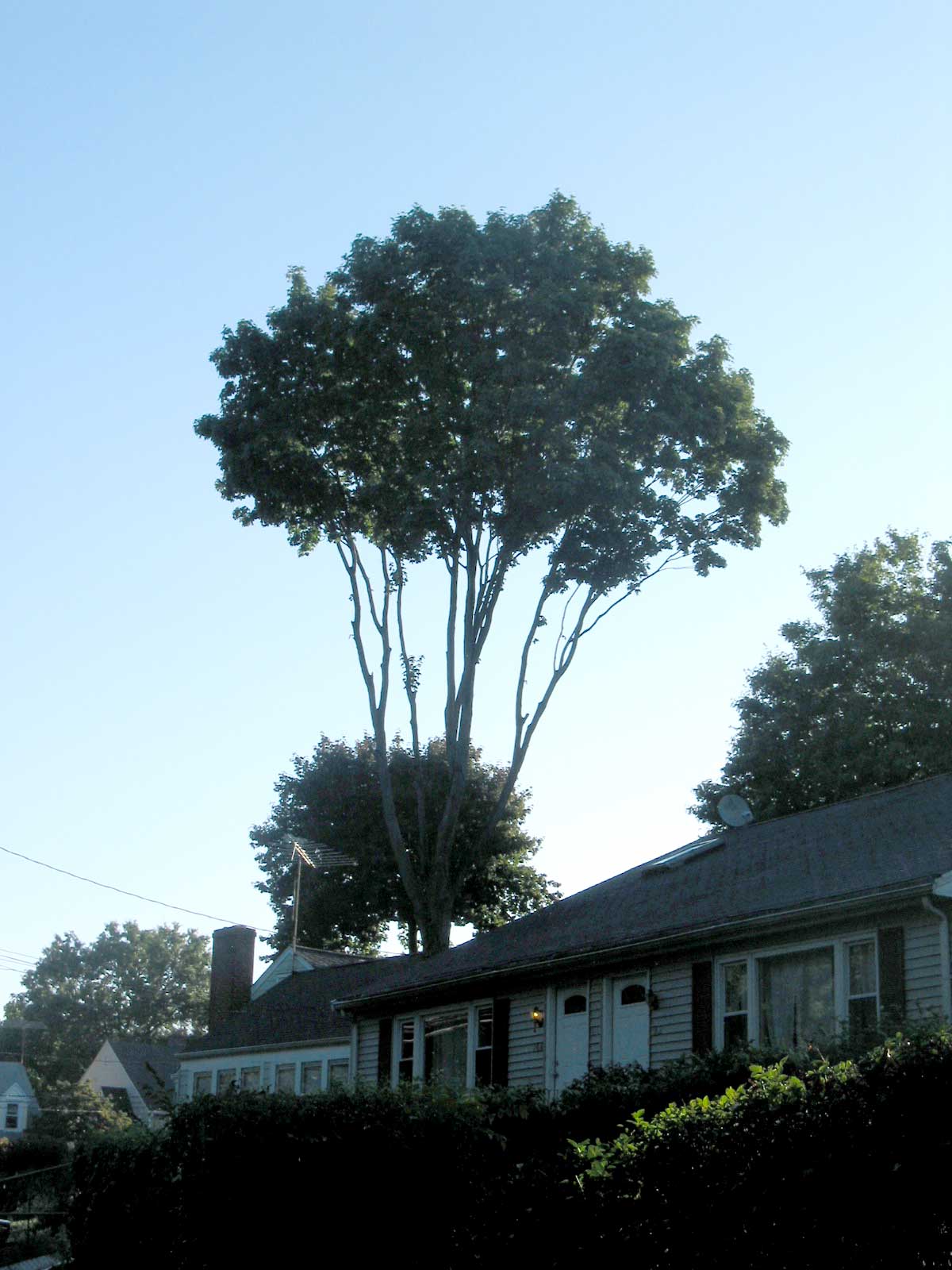
Picture courtesy of Almstead Tree and Shrub
Care
![]()
*Proper
pruning involves removing specific sized deadwood, crossing and
rubbing limbs, subordinating or removing double leaders, reducing
or lightening specific limbs,
raising the canopy for visual and physical clearance and last but
not least,
selective thinning of the inner canopy.
Pictured below is one of the larger Bur Oaks in Kansas City.
Vanbooven Tree Care has been taking care of this tree for many
years.
This would be one of my first choices for a poster for proper
pruning!
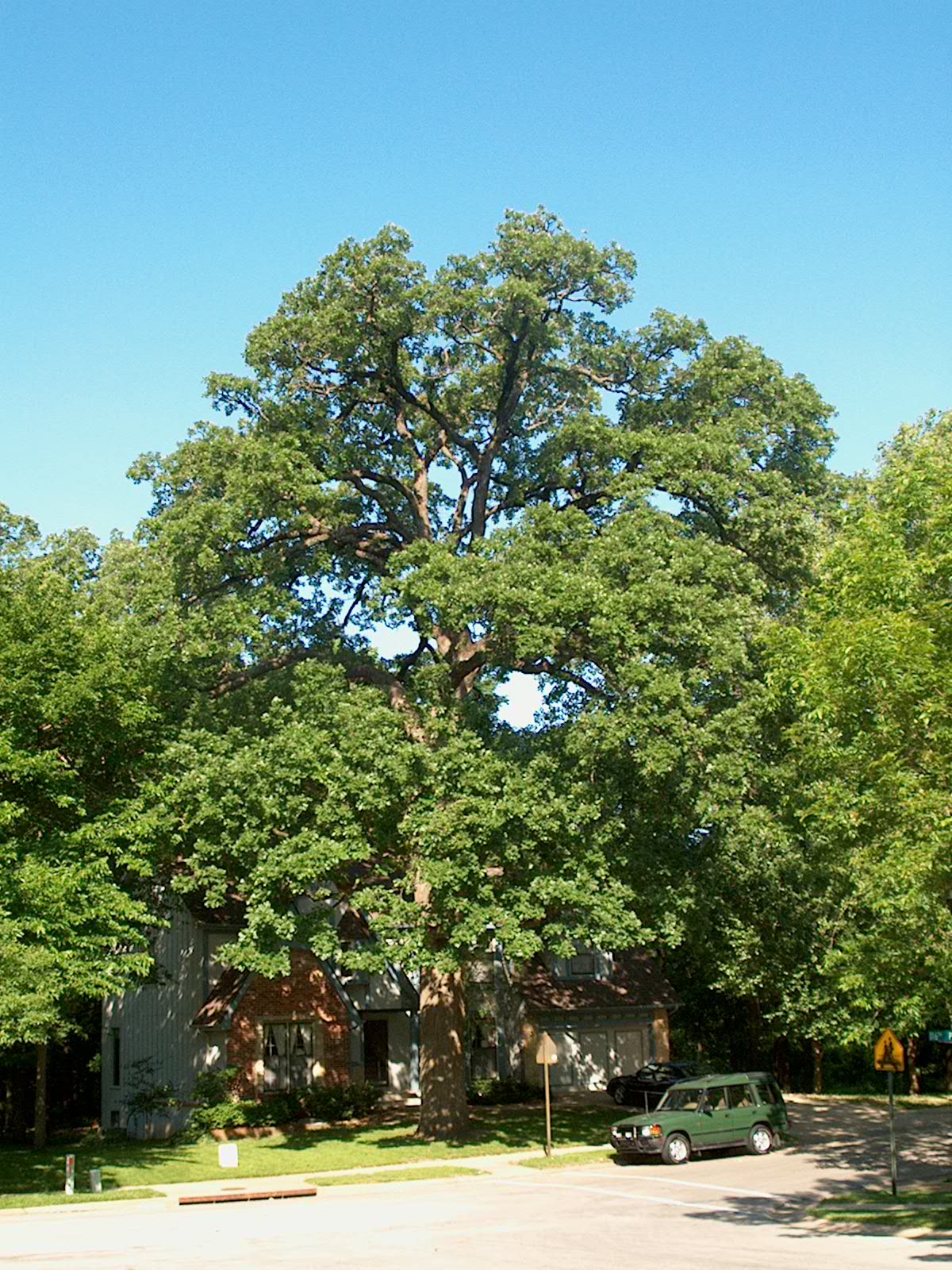
![]()
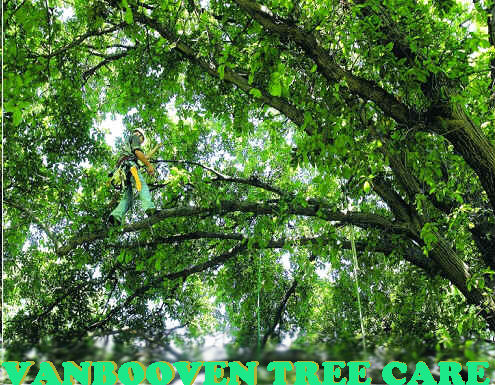
VanBooven Tree Care Home Page
VanBooven Professional Tree
Maintenance
News